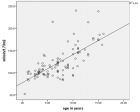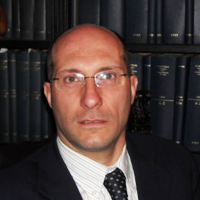Abstract
Mini Review
Generation of Curved Spacetime in Quantum Field
Sarfraj Khan*
Published: 19 January, 2024 | Volume 7 - Issue 1 | Pages: 006-009
To reach such a consistent theory which contains the quantum field theory of particle physics and Einstein’s theory of gravitation as limiting cases, one may proceed in the following way: Standard quantum field theory just ignores the effects of gravity. This is justified in many cases due to the weakness of gravitational interactions at the presently accessible scales. In a first step beyond this approximation, one may consider an external gravitational field that is not influenced by the quantum fields. Here one may think of sources of gravitational fields that are not influenced by the quantum fields under consideration, as high-energy experiments in the gravitational field of the earth or quantum fields in the gravitational field of dark matter and dark energy. This approach amounts to the treatment of quantum field theory on curved spacetimes. The problem of quantization in curved spacetimes is now clearly visible. In Minkowski spacetime, there is a large group of symmetries that enforces a particular choice of vacuum by demanding the vacuum to be invariant. Such a criterion is absent for a general spacetime (M,g). We therefore do not know which state to choose as the vacuum. One might hope that the different prescriptions might be unitarily equivalent such that it doesn’t matter which state one takes to define the theory. Sadly this is not the case: The Stone-Von Neumann theorem is no longer valid for systems with an infinite amount of degrees of freedom. This means that unitarily inequivalent representations of the canonical commutation relations will arise, and it is not clear which equivalence concept representation is the physical one. In the second section of this chapter, we review the notions of Cauchy surfaces and global hyperbolicity.
Read Full Article HTML DOI: 10.29328/journal.ijpra.1001077 Cite this Article Read Full Article PDF
Keywords:
Space-time curved, Mikokshi space-time; Stone van Neumann theorem canonical transformation
References
- Geroch R. Domain of dependence. Journal of Mathematical Physics. 1970; 11: 437–449.
- Hawking SW, Ellis GFR. The Large Scale Structure of Space–Time. Cambridge: Cambridge University Press. 1973; 1. doi: 10.1017/CBO9780511524646.
- Fulling SA. Remarks on positive frequency and Hamiltonians in expanding universes. General Relativity and Gravitation. 1979; 807–824. doi: 10.1007/BF00756661.
- Fulling SA, Narcowich FJ, Wald RM. Singularity structure of the two-point function in quantum field theory in curved spacetime II. Annals of Physics. 136: 243-272.
- Fulling SA. Nonuniqueness of canonical field quantization in rieman- nian space-time. Physical Review D. 1973; 7:2850–2862. doi:10.1103/PhysRevD.7.2850.
- Fulling SA, Sweeny M, Wald RM. Singularity struc- ture of the two-point function in quantum field theory in curved spacetime. Communications in Mathematical Physics. 1978; 63: 257-264. doi: 1007/BF01196934. URL: http://link.springer.com/10.1007/BF01196934.
- Stefan H, Wald RM. Quantum fields in curved spacetime. General Relativity and Gravitation: A Centennial Perspective. 2015; 513–552. doi: 10.1017/CBO9781139583961.015. arXiv: 1401.2026.
- Wolfgang J, Schrohe E. Adiabatic vacuum states on general space-time manifolds: Definition, construction, and physical properties. An- nales Henri Poincare. 2002; 3:1113-1182. doi: 10.1007/s000230200001. arXiv: math-ph/0109010 [math-ph].
- Kay BS. Linear spin-zero quantum fields in external gravitational and scalar fields. Communications in Mathematical Physics. 1980; 71: 29-46. doi:10.1007/BF01230084. http://link.springer.com/10. 1007/BF01230084.
- Kay BS. The double-wedge algebra for quantum fields on Schwarzschild and Minkowski spacetimes. Communications in Mathematical Physics. 1985; 100: 57–81.
Figures:

Figure 1
Similar Articles
Recently Viewed
-
Sinonasal Myxoma Extending into the Orbit in a 4-Year Old: A Case PresentationJulian A Purrinos*, Ramzi Younis. Sinonasal Myxoma Extending into the Orbit in a 4-Year Old: A Case Presentation. Arch Case Rep. 2024: doi: 10.29328/journal.acr.1001099; 8: 075-077
-
Improvement of the Cognitive Abilities in a Chronic Generalized Anxiety Disorder and Moderate Depression Case using a Novel Integrated Approach: The Cognitome ProgramMohita Shrivastava*. Improvement of the Cognitive Abilities in a Chronic Generalized Anxiety Disorder and Moderate Depression Case using a Novel Integrated Approach: The Cognitome Program. J Neurosci Neurol Disord. 2024: doi: 10.29328/journal.jnnd.1001100; 8: 069-089
-
Neuroprotective Effect of 7,8-dihydroxyflavone in a Mouse Model of HIV-Associated Neurocognitive Disorder (HAND)Tapas K Makar, Joseph Bryant, Bosung Shim, Kaspar Keledjian, Harry Davis, Manik Ghosh, Ajay Koirala, Ishani Ghosh, Shreya Makar, Alonso Heredia, Malcolm Lane, J Marc Simard, Robert C Gallo, Volodymyr Gerzanich*, Istvan Merchenthaler*. Neuroprotective Effect of 7,8-dihydroxyflavone in a Mouse Model of HIV-Associated Neurocognitive Disorder (HAND). J Neurosci Neurol Disord. 2024: doi: 10.29328/journal.jnnd.1001101; 8: 090-105
-
Adult Neurogenesis: A Review of Current Perspectives and Implications for Neuroscience ResearchAlex, Gideon S*,Olanrewaju Oluwaseun Oke,Joy Wilberforce Ekokojde,Tolulope Judah Gbayisomore,Martina C. Anene-Ogbe,Farounbi Glory,Joshua Ayodele Yusuf. Adult Neurogenesis: A Review of Current Perspectives and Implications for Neuroscience Research. J Neurosci Neurol Disord. 2024: doi: 10.29328/journal.jnnd.1001102; 8: 106-114
-
Analysis of Psychological and Physiological Responses to Snoezelen Multisensory StimulationLucia Ludvigh Cintulova,Jerzy Rottermund,Zuzana Budayova. Analysis of Psychological and Physiological Responses to Snoezelen Multisensory Stimulation. J Neurosci Neurol Disord. 2024: doi: 10.29328/journal.jnnd.1001103; 8: 115-125
Most Viewed
-
Evaluation of Biostimulants Based on Recovered Protein Hydrolysates from Animal By-products as Plant Growth EnhancersH Pérez-Aguilar*, M Lacruz-Asaro, F Arán-Ais. Evaluation of Biostimulants Based on Recovered Protein Hydrolysates from Animal By-products as Plant Growth Enhancers. J Plant Sci Phytopathol. 2023 doi: 10.29328/journal.jpsp.1001104; 7: 042-047
-
Sinonasal Myxoma Extending into the Orbit in a 4-Year Old: A Case PresentationJulian A Purrinos*, Ramzi Younis. Sinonasal Myxoma Extending into the Orbit in a 4-Year Old: A Case Presentation. Arch Case Rep. 2024 doi: 10.29328/journal.acr.1001099; 8: 075-077
-
Feasibility study of magnetic sensing for detecting single-neuron action potentialsDenis Tonini,Kai Wu,Renata Saha,Jian-Ping Wang*. Feasibility study of magnetic sensing for detecting single-neuron action potentials. Ann Biomed Sci Eng. 2022 doi: 10.29328/journal.abse.1001018; 6: 019-029
-
Pediatric Dysgerminoma: Unveiling a Rare Ovarian TumorFaten Limaiem*, Khalil Saffar, Ahmed Halouani. Pediatric Dysgerminoma: Unveiling a Rare Ovarian Tumor. Arch Case Rep. 2024 doi: 10.29328/journal.acr.1001087; 8: 010-013
-
Physical activity can change the physiological and psychological circumstances during COVID-19 pandemic: A narrative reviewKhashayar Maroufi*. Physical activity can change the physiological and psychological circumstances during COVID-19 pandemic: A narrative review. J Sports Med Ther. 2021 doi: 10.29328/journal.jsmt.1001051; 6: 001-007

HSPI: We're glad you're here. Please click "create a new Query" if you are a new visitor to our website and need further information from us.
If you are already a member of our network and need to keep track of any developments regarding a question you have already submitted, click "take me to my Query."

















































































































































